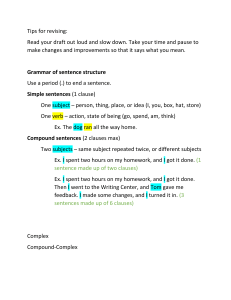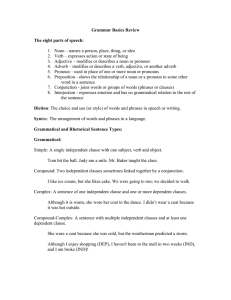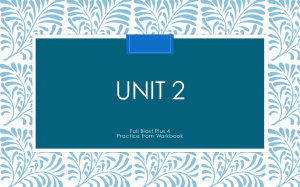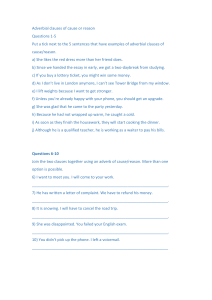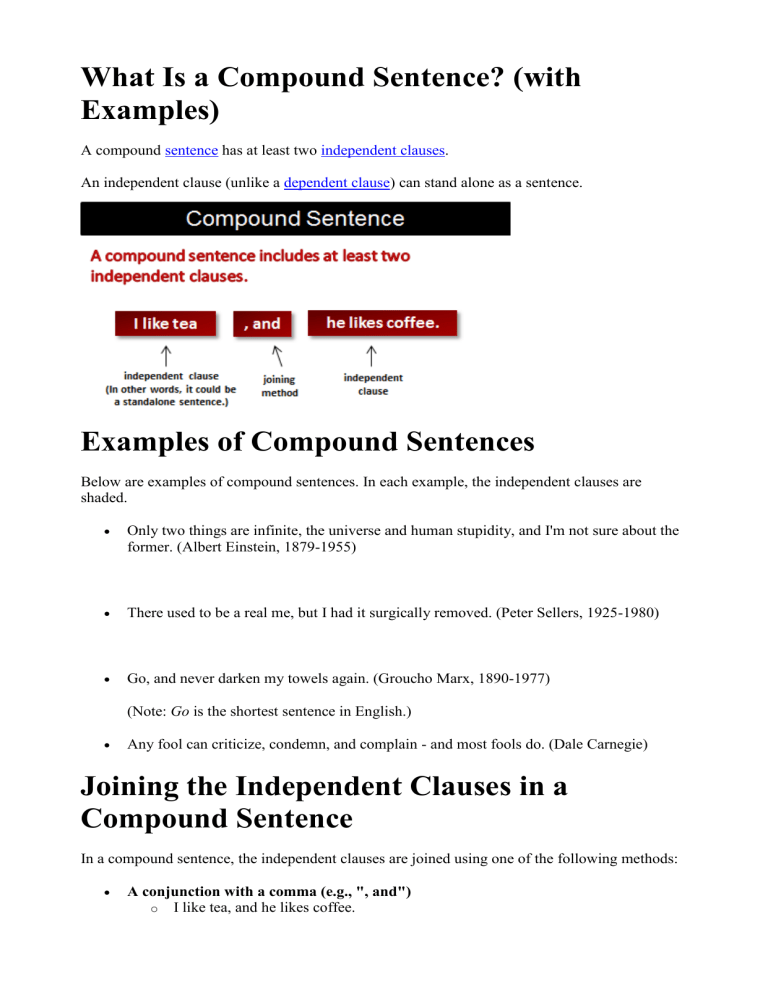
What Is a Compound Sentence? (with Examples) A compound sentence has at least two independent clauses. An independent clause (unlike a dependent clause) can stand alone as a sentence. Examples of Compound Sentences Below are examples of compound sentences. In each example, the independent clauses are shaded. Only two things are infinite, the universe and human stupidity, and I'm not sure about the former. (Albert Einstein, 1879-1955) There used to be a real me, but I had it surgically removed. (Peter Sellers, 1925-1980) Go, and never darken my towels again. (Groucho Marx, 1890-1977) (Note: Go is the shortest sentence in English.) Any fool can criticize, condemn, and complain - and most fools do. (Dale Carnegie) Joining the Independent Clauses in a Compound Sentence In a compound sentence, the independent clauses are joined using one of the following methods: A conjunction with a comma (e.g., ", and") o I like tea, and he likes coffee. Read more about when to use commas before conjunctions. A semicolon o I like hot chocolate; it sends me to sleep. Read more about using semicolons. A colon o I know one thing: I love that girl. (This is rare because the words after a colon are not often an independent clause.) Read more about using colons. A dash o I know you're here — I can smell your perfume. Read more about using dashes instead of semicolons and colons. A conjunction with a semicolon (e.g., "; and") o After the lights went out, I could hear you whispering; and I know you were talking about me. (This is rare because it's an outdated style.) Read more about when to use a comma before conjunctions. The Four Types of Sentence Structure A compound sentence is one of four main sentence structures, all of which are shown below. In these examples, the independent clauses are shaded. A Complex Sentence. A complex sentence has an independent clause and at least one dependent clause. For example: Diplomacy is the art of saying "nice doggie" until you can find a rock. (Will Rogers, 1879-1935) A Compound Sentence. A compound sentence has at least two independent clauses. For example: Some men are born mediocre, some men achieve mediocrity, and some men have mediocrity thrust upon them. (Joseph Heller, 1923-1999) (Jane Wagner) (This example has three independent clauses.) A Simple Sentence. A simple sentence has just one independent clause. For example: A country can be judged by the quality of its proverbs. (German Proverb) A Compound-Complex Sentence. A compound-complex sentence has at least two independent clauses and at least one dependent clause. For example: I stopped believing in Santa Claus when he asked for my autograph in a department store, but I still want to believe in him. What Is a Complex Sentence? (with Examples) A complex sentence has one independent clause and at least one dependent clause. An independent clause (unlike a dependent clause) can stand alone as a sentence. Examples of Complex Sentences Below are examples of complex sentences. In each example, the independent clause is shaded. The dependent clause is unshaded. Stay in the bath until the phone rings. The car swerved to miss Mrs Jackson, who had slipped off the pavement. Both the cockroach and the bird would get along very well without us, although the cockroach would miss us most. (Joseph Wood Krutch, 1893-1970) Leave while you can. When a distinguished but elderly scientist states that something is possible, he is almost certainly right. When he states that something is impossible, he is very probably wrong. (Arthur C. Clarke) (This is two complex sentences.) The Four Types of Sentence Structure A complex sentence is one of four main sentence structures, all of which are shown below. In these examples, the independent clauses are shaded. A Complex Sentence. A complex sentence has an independent clause and at least one dependent clause. For example: The human brain never stops working until you stand up to speak in public. A Compound Sentence. A compound sentence has at least two independent clauses. For example: I always wanted to be somebody, but I should have been more specific. (Jane Wagner) A Simple Sentence. A simple sentence has just one independent clause. For example: Curiosity killed the cat. A Compound-Complex Sentence. A compound-complex sentence has at least two independent clauses and at least one dependent clause. For example: I stopped believing in Santa Claus when he asked for my autograph in a department store, but I still want to believe in him. RELATIVE CLAUSES We use relative clauses to give additional information about something without starting another sentence. By combining sentences with a relative clause, your text becomes more fluent and you can avoid repeating certain words. How to Form Relative Clauses Imagine, a girl is talking to Tom. You want to know who she is and ask a friend whether he knows her. You could say: A girl is talking to Tom. Do you know the girl? That sounds rather complicated, doesn't it? It would be easier with a relative clause: you put both pieces of information into one sentence. Start with the most important thing – you want to know who the girl is. Do you know the girl … As your friend cannot know which girl you are talking about, you need to put in the additional information – the girl is talking to Tom. Use „the girl“ only in the first part of the sentence, in the second part replace it with the relative pronoun (for people, use the relative pronoun „who“). So the final sentence is: Do you know the girl who is talking to Tom? Relative Pronouns relative pronoun use example who subject or object pronoun for people I told you about the woman who lives next door. which subject or object pronoun for animals and things Do you see the cat which is lying on the roof? which referring to a whole sentence He couldn’t read which surprised me. whose possession for people animals and things Do you know the boy whose mother is a nurse? whom object pronoun for people, especially in nondefining relative clauses (in defining relative clauses we colloquially prefer who) I was invited by the professor whom I met at the conference. that subject or object pronoun for people, animals and I don’t like the table that stands in things in defining relative clauses (who or which the kitchen. are also possible) Subject Pronoun or Object Pronoun? Subject and object pronouns cannot be distinguished by their forms - who, which, that are used for subject and object pronouns. You can, however, distinguish them as follows: If the relative pronoun is followed by a verb, the relative pronoun is a subject pronoun. Subject pronouns must always be used. the apple which is lying on the table If the relative pronoun is not followed by a verb (but by a noun or pronoun), the relative pronoun is an object pronoun. Object pronouns can be dropped in defining relative clauses, which are then called Contact Clauses. the apple (which) George lay on the table Relative Adverbs A relative adverb can be used instead of a relative pronoun plus preposition. This often makes the sentence easier to understand. This is the shop in which I bought my bike. → This is the shop where I bought my bike. relative adverb meaning use example when in/on which refers to a time expression the day when we met him where in/at which refers to a place the place where we met him why for which refers to a reason the reason why we met him Defining Relative Clauses Defining relative clauses (also called identifying relative clauses or restrictive relative clauses) give detailed information defining a general term or expression. Defining relative clauses are not put in commas. Imagine, Tom is in a room with five girls. One girl is talking to Tom and you ask somebody whether he knows this girl. Here the relative clause defines which of the five girls you mean. Do you know the girl who is talking to Tom? Defining relative clauses are often used in definitions. A seaman is someone who works on a ship. Object pronouns in defining relative clauses can be dropped. (Sentences with a relative clause without the relative pronoun are called Contact Clauses.) The boy (who/whom) we met yesterday is very nice. Non-Defining Relative Clauses Non-defining relative clauses (also called non-identifying relative clauses or non-restrictive relative clauses) give additional information on something, but do not define it. Non-defining relative clauses are put in commas. Imagine, Tom is in a room with only one girl. The two are talking to each other and you ask somebody whether he knows this girl. Here the relative clause is non-defining because in this situation it is obvious which girl you mean. Do you know the girl, who is talking to Tom? Note: In non-defining relative clauses, who/which may not be replaced with that. Object pronouns in non-defining relative clauses must be used. Jim, who/whom we met yesterday, is very nice. How to Shorten Relative Clauses? Relative clauses with who, which, that as subject pronoun can be replaced with a participle. This makes the sentence shorter and easier to understand. I told you about the woman who lives next door. – I told you about the woman living next door. Do you see the cat which is lying on the roof? – Do you see the cat lying on the roof? Passives We make the passive using ‘be’ – in a suitable tense – and the past participle (‘done’, ‘played’ etc.). We use the passive: 1) … when we don’t know, or we are not interested in, who does an action. My car was stolen yesterday. We don’t know who stole the car. A lot of wine is produced in France. It’s not important who produces the wine. 2) … when the main topic of the sentence isn’t who did the action. Television was invented in the 1920s by John Logie Baird. The main topic here is television – we aren’t particularly interested in ‘who’. Kennedy was assassinated in 1963. In English we tend to put the most important thing at the start of the sentence. 3) … more in written English than in spoken English. War and Peace was written by Tolstoy. You often see the passive in textbooks. The mixture is heated to 500˚C. Scientific texts especially use the passive. Tenses The passive can be used with all tenses - the form of ‘be’ changes. What is tiramisu made from?. Present Simple. The hall is being painted this week so our class will be in a different room. Present Continuous. Oranges have been grown here for centuries. Present Perfect. When he got home he found that his flat had been burgled. Past Perfect. The work won’t be finished until next week. Future Simple. Modal verbs also use ‘be’ and the past participle. Answers must be written in pencil. Competition entrants might be chosen to appear on TV. The Tenses Overview | Simple Present | Simple Future | Simple Past Present Continuous | Future Continuous | Past Continuous Present Perfect Simple | Present Perfect Future | Present Perfect Continuous Past Perfect Simple | Past Perfect Continuous The Future It's all about time. Things can happen now, in the future or in the past. The tenses simply show the time of an action or state of being as shown by a verb. The verb ending is changed (conjugated) to show what time it is referring to. Time can be split into three periods The Present (what you are doing), The Past (what you did) and The Future (what you are going to do, or hope / plan to do ). The tenses we use to show what time we are talking about are split into the Simple, Continuous and Perfect tenses. In English we use two tenses to talk about the present and six tenses to talk about the past. There are several ways to talk about the future some of which use the present tenses, these are: Present Simple Present Present Continuous Past Simple Past Past Continuous Present Perfect Simple Present Perfect Continuous Past Perfect Simple Past Perfect Continuous Future Using the Simple Present Using the Present Continuous Using the Present Perfect Simple Using the Present Perfect Continuous Using going to Using shall/will Simple Tenses The simple tenses are used to show permanent characteristics of people and events or what happens regularly, habitually or in a single completed action. Continuous Tenses The continuous tenses are used when talking about a particular point in time. Perfect Tenses Sometimes you need to give just a little bit more information about an action or state...and that is where the perfect tenses come in. The perfect tenses are used when an action or situation in the present is linked to a moment in the past. It is often used to show things that have happened up to now but aren't finished yet or to emphasize that something happened but is not true anymore. When they end determines which of them you use. Perfect tenses are never used when we say when something happened i.e. yesterday, last year etc. but can be used when discussing the duration of something i.e. often, for, always, since etc.. The Future Tenses Discussing the future in English can seem complicated.The present simple, present continuous, present perfect simple and the present perfect continuous can all be used and often it is possible to use more than one structure, but have the same meaning. Collocations What is a collocation? A collocation is two or more words that often go together. These combinations just sound "right" to native English speakers, who use them all the time. On the other hand, other combinations may be unnatural and just sound "wrong". Look at these examples: natural English... unnatural English... the fast train fast food the quick train quick food a quick shower a fast shower a quick meal a fast meal Why learn collocations? Your language will be more natural and more easily understood. You will have alternative and richer ways of expressing yourself. It is easier for our brains to remember and use language in chunks or blocks rather than as single words. How to learn collocations Be aware of collocations, and try to recognize them when you see or hear them. Treat collocations as single blocks of language. Think of them as individual blocks or chunks, and learn strongly support, not strongly + support. When you learn a new word, write down other words that collocate with it (remember rightly, remember distinctly, remember vaguely, remember vividly). Read as much as possible. Reading is an excellent way to learn vocabulary and collocations in context and naturally. Revise what you learn regularly. Practise using new collocations in context as soon as possible after learning them. Learn collocations in groups that work for you. You could learn them by topic (time, number, weather, money, family) or by a particular word (take action, take a chance, take an exam). You can find information on collocations in any good learner's dictionary. And you can also find specialized dictionaries of collocations. Tell me who you go with and I'll tell you who you areSaying Types of collocation There are several different types of collocation made from combinations of verb, noun, adjective etc. Some of the most common types are: adverb + adjective: completely satisfied (NOT downright satisfied) adjective + noun: excruciating pain (NOT excruciating joy) noun + noun: a surge of anger (NOT a rush of anger) noun + verb: lions roar (NOT lions shout) verb + noun: commit suicide (NOT undertake suicide) verb + expression with preposition: burst into tears (NOT blow up in tears) verb + adverb: wave frantically (NOT wave feverishly) Sample Collocations There are several different types of collocation. Collocations can be adjective + adverb, noun + noun, verb + noun and so on. Below you can see seven main types of collocation in sample sentences. 1. adverb + adjective Invading that country was an utterly stupid thing to do. We entered a richly decorated room. Are you fully aware of the implications of your action? 2. adjective + noun The doctor ordered him to take regular exercise. The Titanic sank on its maiden voyage. He was writhing on the ground in excruciating pain. 3. noun + noun Let's give Mr Jones a round of applause. The ceasefire agreement came into effect at 11am. I'd like to buy two bars of soap please. 4. noun + verb The lion started to roar when it heard the dog barking. Snow was falling as our plane took off. The bomb went off when he started the car engine. 5. verb + noun The prisoner was hanged for committing murder. I always try to do my homework in the morning, after making my bed. He has been asked to give a presentation about his work. 6. verb + expression with preposition We had to return home because we had run out of money. At first her eyes filled with horror, and then she burst into tears. Their behaviour was enough to drive anybody to crime. 7. verb + adverb She placed her keys gently on the table and sat down. Mary whispered softly in John's ear. I vaguely remember that it was growing dark when we left.


